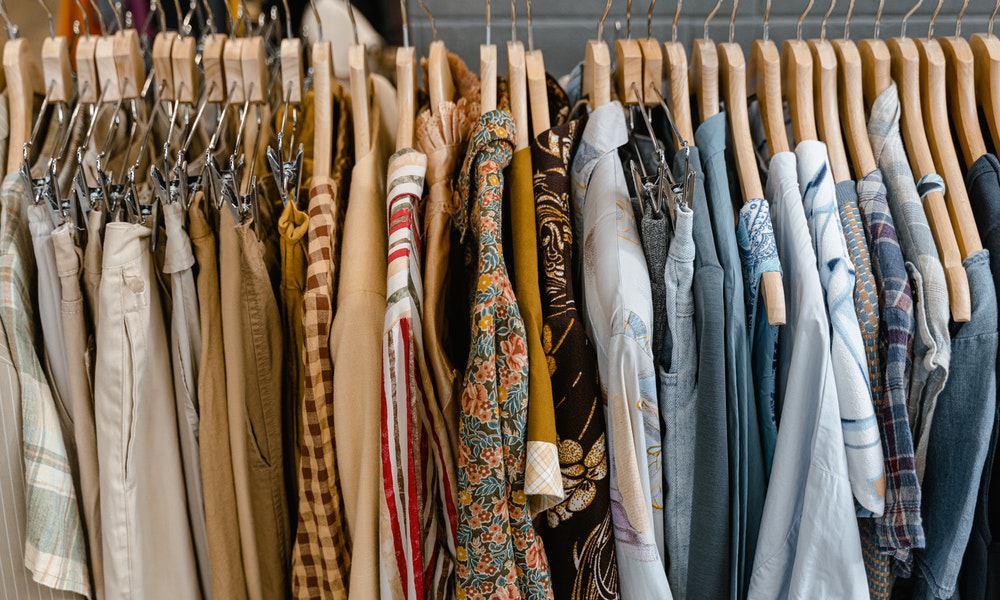We tend to love fashion; it is a way to express ourselves on a daily basis! Sadly, fashion can be damaging to the planet - fast fashion is excessive and costs our planet lots of resources. Not to mention that many man-made materials have been created to make modern clothing that is more harmful than natural materials like wool, cotton & bamboo. However, there are lots of ways to change up our wardrobe, without damaging the planet by consuming fast fashion! Even better, it can save you some money too! Whilst fast fashion may seem cheap, in the long run, it is purchasing quantity over quality. I have listed some alternatives to help you get some ideas to change up your wardrobe, with the planet and your wallet in mind!
Op-Shop/Second-Hand Purchasing
It can be so satisfying to find a piece of treasure for a great price at an Op-Shop. Buying second-hand helps decrease demand for new clothes to be made and give love to a used piece of clothing. Actually, you might even be lucky and find a new piece that was donated without ever being worn! Since it is usually donated clothing, the prices are a lot cheaper than buying something new from a shop.
DIY
There are many ways to make clothes yourself! From knitting scarves to sewing dresses, you can always try making what you'll wear! There are many tutorials around, books in the library, or experienced creators that are happy to share their knowledge, to help get you started. You can make something from scratch or you can edit a piece you bought second-hand or that is already hanging in your closet. You can even find fabric in some Op-Shops or use old clothing/bed sheets/etc to make something.

Renting
We all probably have had at least one occasion where we needed to dress up. However, after the event is done, the expensive outfit just stays in the closet, never being worn again. This is where renting is a great solution. You can find many styles for special occasions available to rent for a day to a week or two! This way you do not have to commit to something you would never wear again, save closet space and your wallet! Not to mention that the dress can be re-used by the company, saving another dress having to be made to replace the new one you would have bought.
Swapping/Borrowing
If you have ever been like me, you have seen something in your parents' or friends' closet that you would love to wear. So why not ask? Maybe they'd be willing to let you borrow the clothing you've been eyeing. If they want something in return, try offering to swap one of their pieces for one of yours! That way you both get to change up your wardrobe without having to look too far. Otherwise, there are websites you can search for that will offer you the same principle: swap pieces of clothing or borrow for a fee.

Slow fashion brands/companies
When all else fails and shopping is a must, then try to go for an option that will cost the planet the least. More and more brands are emerging that are looking out for the planet when producing their clothing. From natural materials to producing in small batches, these brands want to look after the planet like you do. I would especially recommend this for hygienic clothing like underwear and swimwear. An online search should quickly bring up some results – I find it best to check their websites for where they make their products (made in Australia means business and money stays in the country, plus it reduces the strain on the planet when it comes to postage), how they try and look after the planet, what materials the clothing is made of, etc. Sometimes these products will cost more, but they are worth it in the long run, as they tend to be more durable, better quality, and better for the earth.

Hopefully, these ideas will help you when you next try and spruce up your wardrobe. There are many options to choose from that will cost the planet less, and you in the long run too!
Written by Denise. Photos from Pexel.
Denise gets joy from finding new ways to make less waste. From sewing her own produce bags to use at the supermarket, to gardening and growing her own produce with the little space she has. The limitations don't stop her from trying out new ideas to make her life more sustainable and less wasteful.
